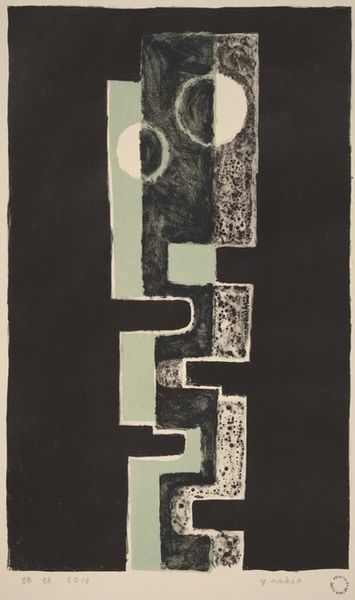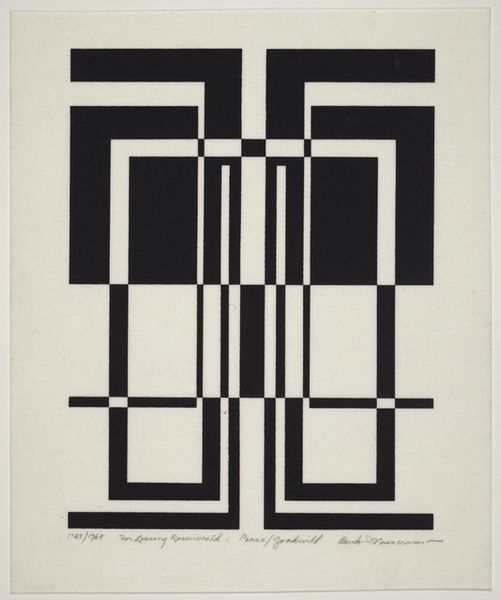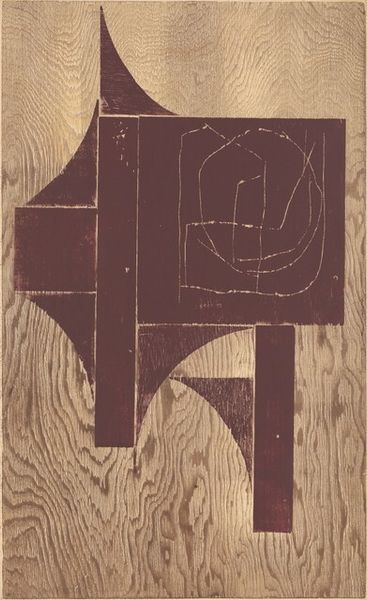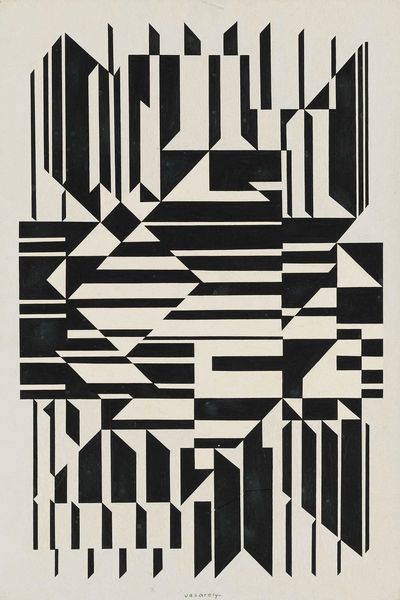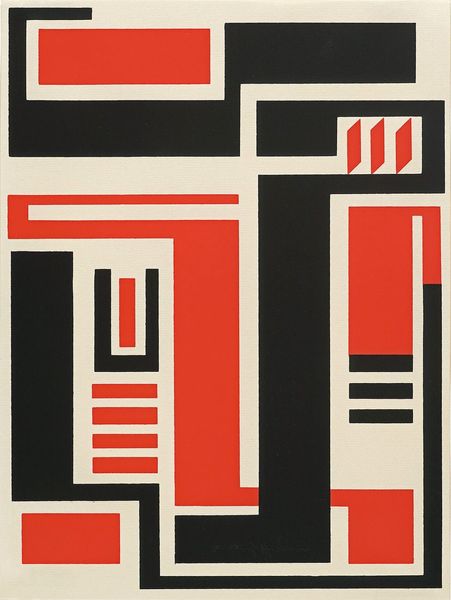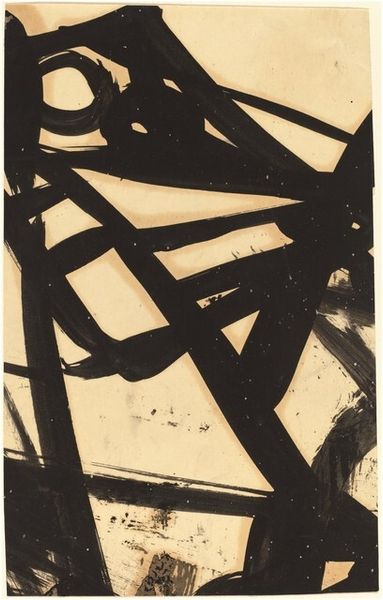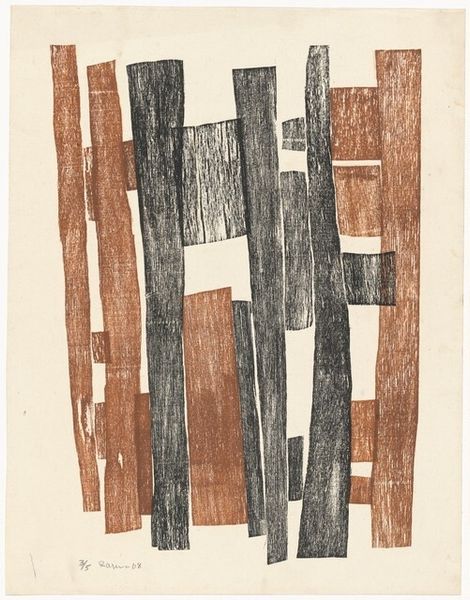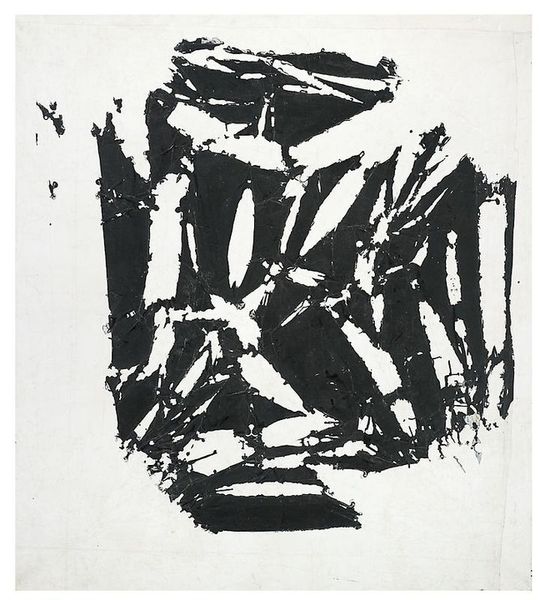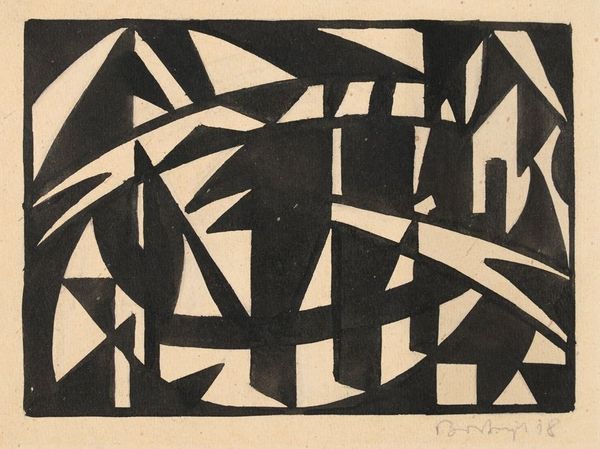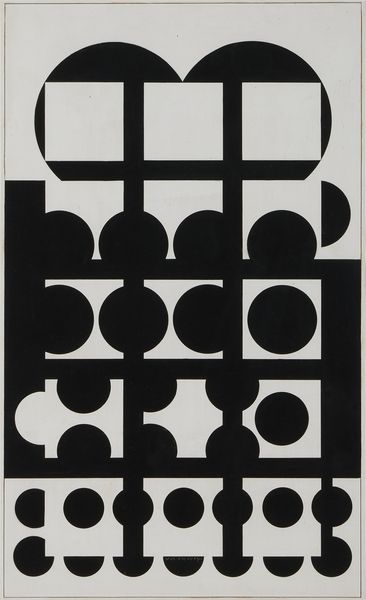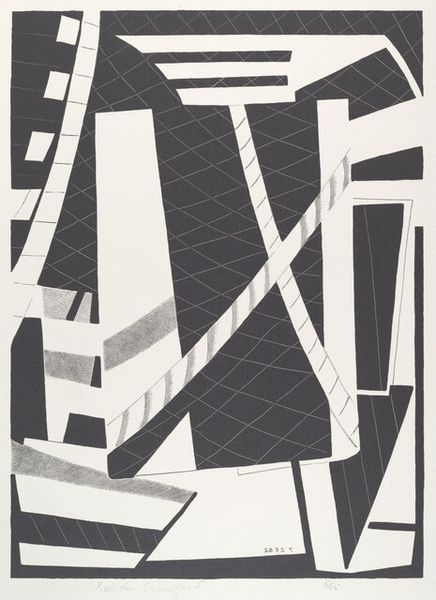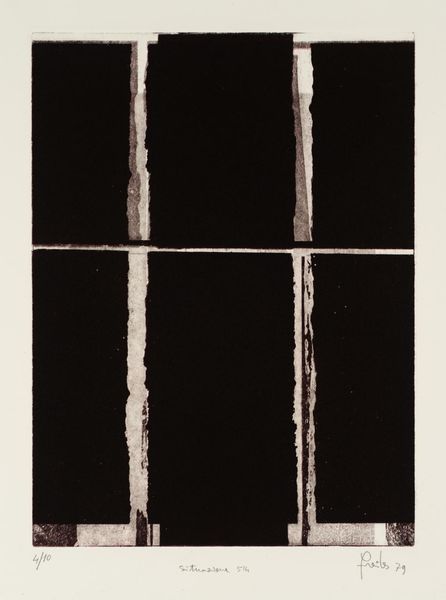
graphic-art, print, paper, woodcut
#
graphic-art
#
cubism
# print
#
op art
#
typography
#
constructivism
#
paper
#
form
#
geometric
#
woodcut
#
abstraction
#
line
#
monochrome
Copyright: Sandor Bortnyik,Fair Use
Curator: We’re looking at a woodcut print by Sándor Bortnyik titled "Függőleges Kompozíció," which translates to "Vertical Composition." It's a striking example of abstract graphic art, created on paper. Editor: It immediately strikes me as incredibly bold. The strong contrast of black and white creates a dynamic visual tension, doesn't it? It feels almost like a study in opposing forces, the harsh geometry set against the subtle texture of the paper. Curator: Exactly. The piece reflects Bortnyik's involvement with Constructivism and other avant-garde movements, prevalent in the early 20th century. His work served not only as aesthetic experimentations but as visual language intended to influence society and public opinion. You see echoes of movements such as the Bauhaus in his design thinking. Editor: I agree. Looking closely, I am intrigued by how he plays with positive and negative space. The geometric forms, some solid black, some defined only by their outlines, create an ambiguous depth. It makes you question what is actually 'there'. It also suggests the influence of Cubism. Curator: In that period there was much cultural expectation for the arts to be more democratic. A benefit of printmaking in the interwar period was that artists could create art for the people in a more direct fashion. It speaks volumes that his artistic practice incorporated accessibility and a vision of progressive society through its formal strategies. Editor: It makes you think about how this artwork might have been received in its time, a potent message distilled into elemental forms. Curator: The visual directness may have made a profound impact on a society undergoing major ideological shifts. Editor: Indeed, its stark simplicity seems to shout, rather than whisper. What seemed like purely an arrangement of lines suddenly seems to speak with clarity and intent. Curator: Precisely. And in engaging with that tension, we understand how artists use art to shape and reflect collective aspirations. Editor: Absolutely, seeing this artwork has provided insights that are, surprisingly, anything but black and white.
Comments
No comments
Be the first to comment and join the conversation on the ultimate creative platform.
